A Taste of CeBI(o)T
Adrien Thiery8 min read
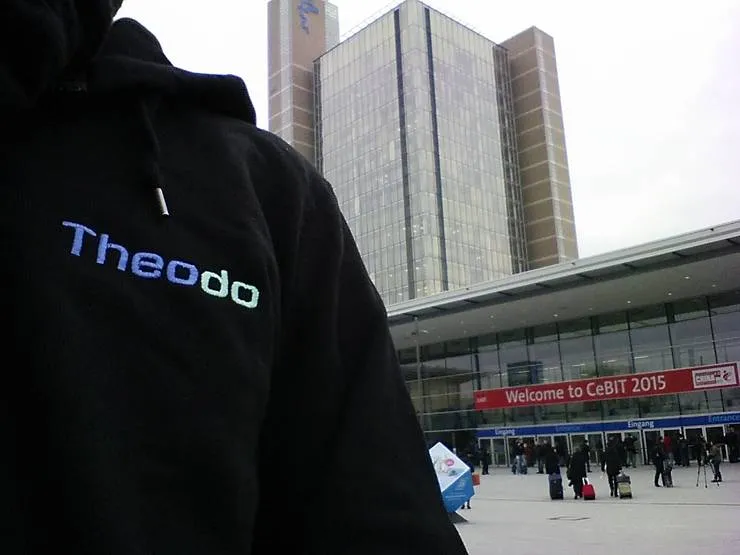
On Monday, March 16, I got the chance to attend the first day of CeBIT 2015 in Hannover, Germany, the biggest Computer science related fair of the world and more specifically the Code_n building which theme was “Into the internet of Things”.
Code_n is defined as an “initiative [that] offers an ecosystem designed to network digital pioneers and support the development of new, digital business models.” according to its website.
In other words, it is one of the many helpers for startups to grow, get known and get to know other actors in their space or related spaces. In this objective, it comes every year at CeBIT and offers a space for startups to present their work and network.
It is actually hard to say “I attended CeBIT” because you can’t humanly attend each and everything at CeBIT, which happens over an area of 450 000 square meters and over 20 buildings. From Enterprise level IT groups to Chinese smartphone waterproof accessories manufacturers, smart dartboards startups and drones companies, you can see anything at CeBIT.

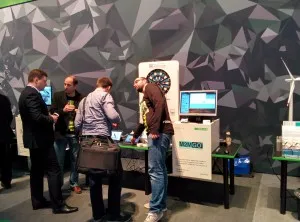
This article is, therefore, an extract of what I saw in the Code_n building and its core theme that make a lot of people right on the internet today: The Internet Of Things.
An IoT welcome - Robochop
The thing
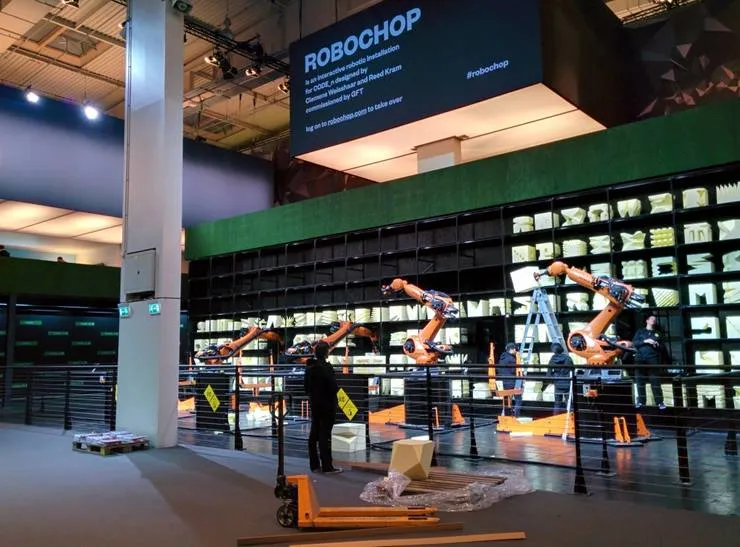
When entering the Code_n building, the first (and almost only) thing you could see was Robochop. Installation of 3 industrial robots cutting polystyrene cubes automatically.
The particularity of these cuts is that the designs of all of them have been created by people around the world in a web interface, and will be sent to their creators just after CeBIT.
See website: http://www.robochop.com/
The story
Clemens Weisshaar is a designer trying to make the line between digital and physical world vanish.
He already had some projects in his past relating to this theme:
* A “Magic mirror” for retail (in the PRADA Epicenter in Beverly hills) : A camera films you and when you turn, it slows down the time so that you can see your back and how the clothes fit you.
* Breeding tables - centre Pompidou: A concept of tables, each unique because randomly generated but mechanically strong enough for being a table and manufactured only by cutting and bending steel.
* OutRace : A robotic installation doing light painting of tweets sent by people on Trafalgar square in London.
* RT18 chair prototype : The designer (with the help of Reed Kram as well) created a chair full of sensors to see constraints, visualizable in real-time on a screen facing the chair and allowed people to sit and play with it. With the data they retrieved during this experiment, they were then able to create the lightest chair ever (2.2kg).
With his latest projects, Clemens Weisshaar wanted to assemble Design, Engineering, Giving code to the machine and Shipping all in one application, as in a production line. And when possible give the power to users in the process.
Clemens Weisshaar and Reed Kram connect people to heavy machinery and Robochop is their latest piece of Art and Technology.
The big trends I felt
Being THE platform
”One platform to rule them all, One platform to find them,
One platform to bring them all and in the darkness bind them”

A lot of startups out there are interested in binding all your smart objects together for different purposes:
- Cozify, for example, is a Finnish startup that creates a mobile app to allow you to group, control and manage your smart devices at home in a simple way.
- Wicross is a French company that wants to bring together all the Data of your smart devices, and create a platform to “sell”/exchange this data to/with big companies to get better services or additional value out of your devices.
- ReelyActive is not only in this scope but partly wants to be the open-source platform on which you can host your identity linked to one or several of your smart devices (for example, your smartwatch becomes your ID card in the virtual world (but I’ll explain reelyActive’s activity in more details a bit further in this article)
- Homey One of my favourites, is a small ball-ish device (very similar to the Nexus Q in design and, I asked them, they totally stole the idea) that you will surely place in your living room and whom you can talk to to control your devices. Some of the examples were “Homey, can you turn the lights to green please? (not mandatory)” > Homey connects to the Philips Hue light bulbs and turns them green.
- Muzzley One app to control, connect to all your devices and display their updates
- PipesBox Pretty similar
- Many more in a more B2B manner: Carriots, Com2m, Sensefinity, M2MGO …
Security/Security without keys
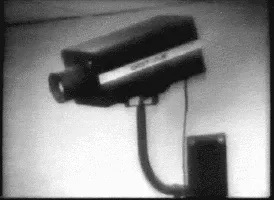
We knew it already with the success of MyFox at CES, but security is a big concern for customers, and many entrepreneurs see in this area a big opportunity.
- Kiwi.Ki creates a system that allows you to enter your building thanks to a transponder that you can keep in your pocket or thanks to your smartphone.
- FUZ design (changing name soon) does different types of Locks for your bike, your fence or your container that you can open with Bluetooth and you can manage the access to (You can lend your bike to a friend for example)
- Evercam : Apps for cameras over Ip
- LEAPIN Digital Keys manufactures door locks that you can open with your phone (targetting the hostel’s card lock mostly)
- Novi The 2.0 version of your house alarm/smoke detector
Indoor navigation/location
- ConTagt
- Loopd (more or less) creates small beacons for events/museums to gather analytics about visitors.
- Xetal Indoor localization without beacons
Parking

I would never have thought that, as a not-so-much car driver, but Parking seems to really be a big problem in our everyday lives.
Proof ?
At least 3 startups of the 50 finalists chosen by Code_n try to tackle this problem
- ComThings does a Cloud connected Universal Remote to open all your doors and garages
- ParkPocket is working on a mobile phone app to find and rent a Parking spot easily
- ParkTag Automatically predicts which park spaces will be free soon
More in depth with a startup (my favourite) : ReelyActive
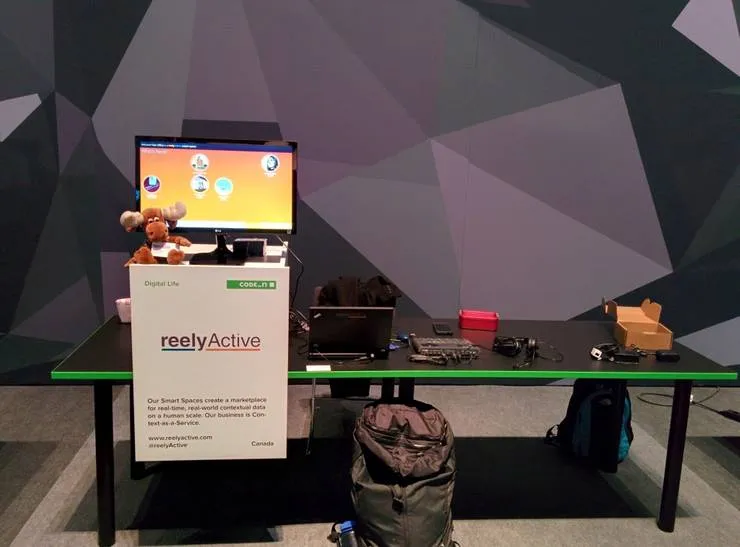
ReelyActive is a Montreal company founded in 2012. After getting some interest by participating to the Founder Fuel Fall 2012 session, ReelyActive published three scientific papers to support the science behind their vision and their product and has been title “World’s best startup” in November 2013.
Their main hardware product is a set of sensors called “reelceivers” available for Bluetooth or RFID detection that connect to the network through RJ45 ports and enter in communication with a hub that needs to be on the network.
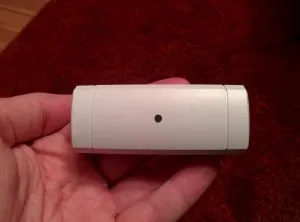
The idea is then to bridge your physical world to the virtual world and the potential of this technology is awesome. From the smart home to the smart museum, the smart office or the smart parking, ReelyActive is just making it able to turn any space in a smart space.
The whole software side is then open-source and based on NodeJS technology. Documentation and tutorials are available on github, along with all the code allowing you to super easily plug your sensor and start decoding bluetooth communication and even visualising them easily in a smartspace !

Conferences
With just one day to attend, I didn’t see a lot of conferences but I still manage to see two of them (without considering a Pitch & Question session), that I will summarize in bullet points hereafter - to be honest because it was a bit disappointing.
Into the internet of the customers (Salesforce):
- What’s important in your app, service, [fill the blank], … ? The Customer
- Salesforce: #1 CRM for Marketing, analysis, communication with partners, most innovative company according to Forbes
- At Salesforce, 1% of the time of everyone, the equity of the company and the money won by the product are given to social
- How Robochop works with salesforce: data retrieved from the robots: problems, performance, production rate, where the “commands” come from, etc. (pretty cool actually)
Opportunities for a digital Germany (Google):
- Internet is for everyone.
- More devices every day: wear, car, smartphones
- Every business can compete with big groups now
- Every business is a digital business as well (or should be)
- However, founding a company is hard in Europe (harder than in the US?) => Google helps (the factory (Berlin), Google Ventures Europe,…)
In conclusion, this day has been a really busy day at CeBIT and the Internet of Things seems to have always more new actors and for me, the small startups are definitely eating more and more of the pie of innovation and new markets compared to the giants (Google’s booth and conference were really disappointing).